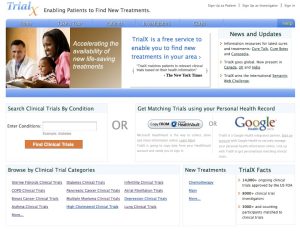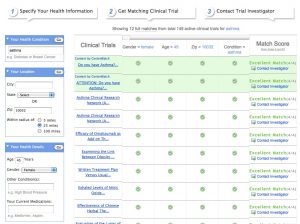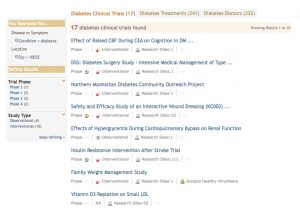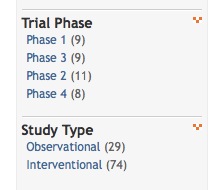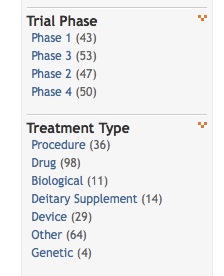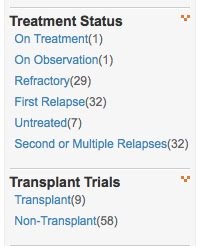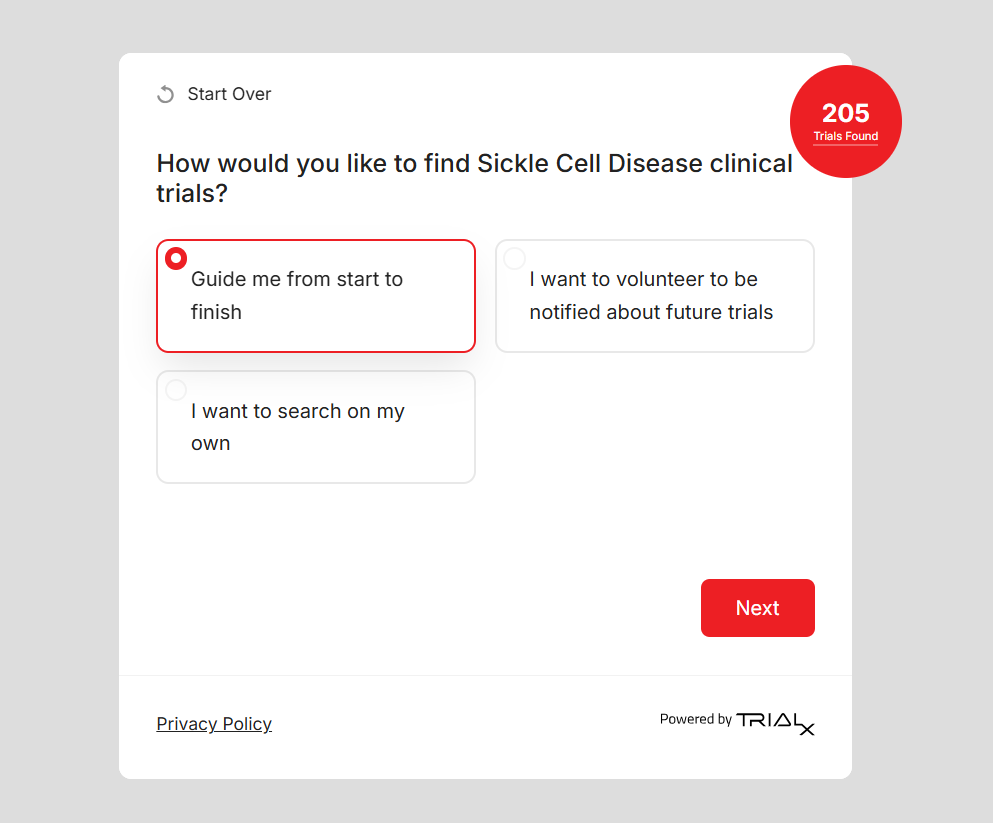Revamped UI, Treatment Search and Doctor Search
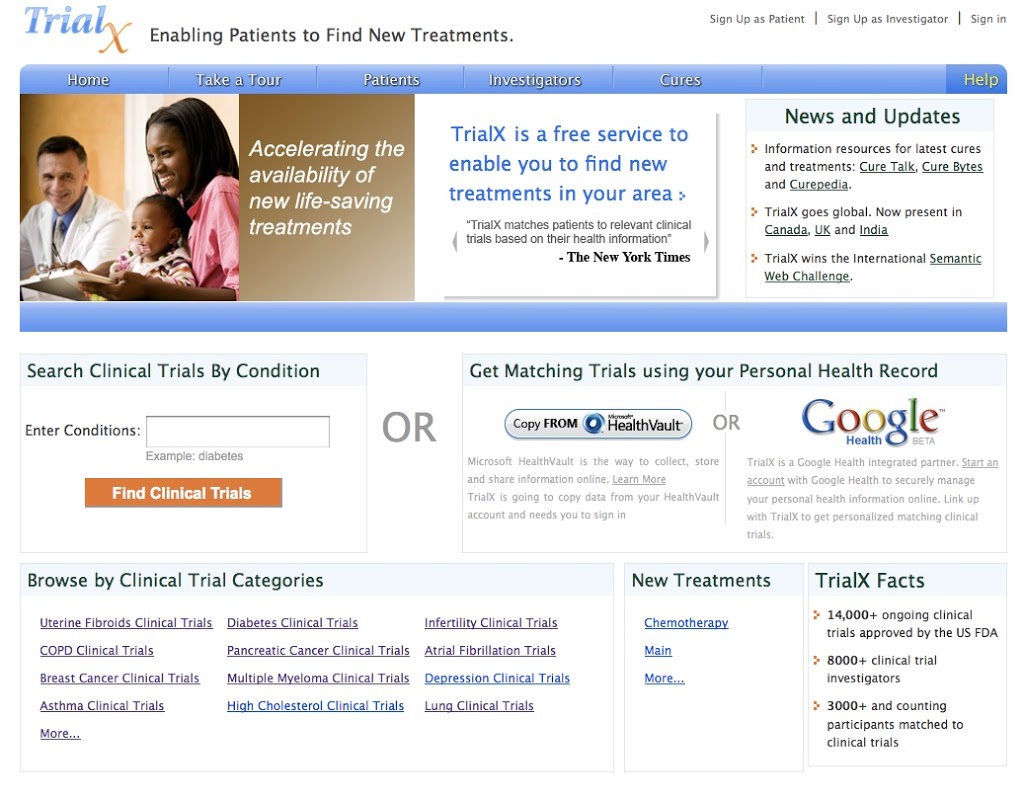
Past few months, we’ve been hard at work re-designing the TrialX.com user interface to improve the user experience and creating the best clinical trials search engine for patients and their family members. We went through a number of design iterations and informal usability tests to come up with the new design and the flow.
The major change is a step away from our original innovative “match matrix” interface to a more conventional search-based UI with faceted search (“facets” are those left side bar filters that you see for example in Bing and new Google search re-design). We found that our users felt more comfortable with conventional search UIs, and a guided search than manually entering their health information (although, one could always use their HealthVault or Google Health). The faceted search technology provides “cues” on side bar all the while showing the number of results in each category.
The search facets on TrialX are dynamically generated based on the content being searched, for example, Trial search results will show filters for “location”, “study type”, whereas Treatment search results will show filters for “trial phase” and “treatment type”. Further, our technology is able to generate disease-specific facets on-the-fly, for example, cancer trials will have facets for disease stage (stage I, stage II, …) or treatment status (on treatment, on observation,…) cancer trials.
|
Facets for Clinical Trial
|
Facets for Treatment
|
Disease Specific Facets
(e.g. Multiple Myeloma)
|
The Technology
The TrialX technology that powers the search and facet generation is based on generic semantic models that allows us to intelligently search across structured and unstructured data such as clinical trials, treatments or doctors and generating the facets on-the-fly for filtering the results.
Additionally, the filter values will under go semantic expansion during run-time, for example, a search for condition = lung cancer will bring up results for trials testing small cell lung cancer and non-small cell lung cancer. In implementing semantic technologies, such generic models slows down the performance of the real-time search engines, however, we’ve implemented some really cool optimizations and hacks that provide blazing fast response times. Try It.
We realize that our technology is far from perfect and there is always a room for improvement — we are dedicated to building the most awesome, useful web-based tools for enabling patients and researchers to find new information and connect with each other. As always, we’d love to hear your feedback as we make such new improvements to TrialX.
